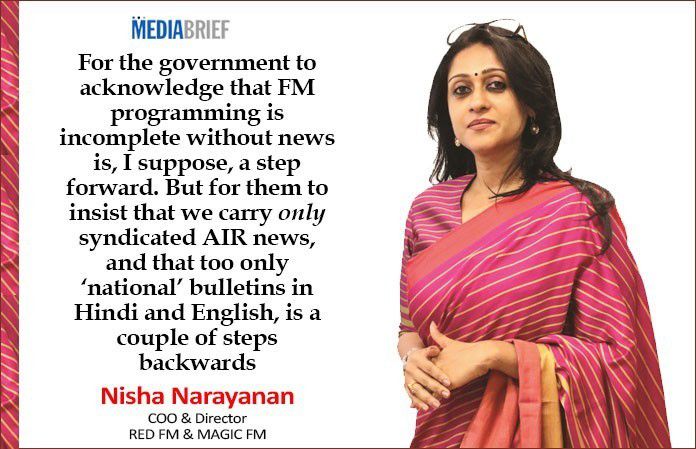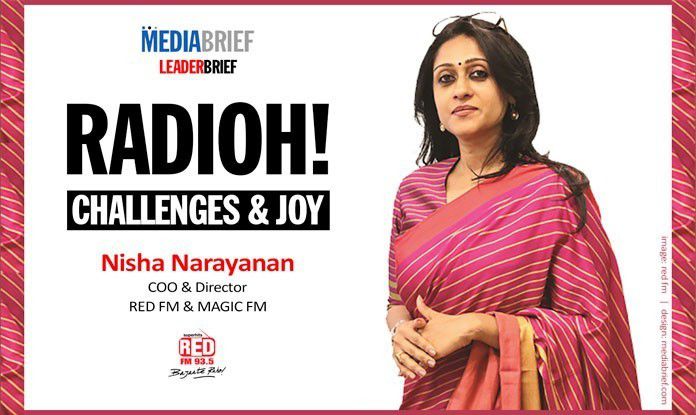
Although FM Radio and Music -- but more so Radio -- are powerful mediums, both have remained beset with problems that somehow have failed to be overcome. A year ago, I was a panelist at a big, ‘loud’ (title-pun intended) music b2b event. And it was déjà vu. Yet again, vertical- and function heads talking about how wonderful Radio is, and about the great hold of Music, which, in a nation with a listening culture like ours, makes for a powerful combination with Radio. But yet again, as in the past, there was no consensus-driven request or ‘representation’ that the speechifying sages sought to collate and send to any government ministry or body for help to resolve industry problems with radio that have become massive legacy issues now.
Issues such as copyright, royalties, license fees, content-restricting regulation and a terribly constricting woeful lack of measurement, that have loomed and grown over the years into ever bigger problems. The radio audience measurement issue has small little research-agency shops flourishing and enabling FM Radio networks to be sold on perception -- marginal, laggard FM stations and networks do their own research with the help of the aforementioned research shops, elicit ‘helpful’ findings, and go about selling on perception. If only there were one single deep and wide measurement system and yardstick for media buying on radio as there is with BARC India for Television, then there wouldn’t be multiple asterisks-helped rankings for radio stations in the same markets. Which would definitely plug a lot of wasted advertising budgets on Radio, which, however, needs all the help it can get, considering it is the single most difficult medium to operate in.
So, cutting back from the memory of those fence-sitters at that B2B event: fortunately, there are some stalwart Radio and Music professionals who, over the years, have strived hard for the medium too as much as they have for their individual businesses, and have driven constructive agendas for sub-sector and Industry.
One such shining light is the literally incandescent Nisha Narayanan – COO & Director, RED FM & Magic FM, also a Chevening Scholar who has been active in her favourite space in the M&E business, FM Radio, for more than 26 years now. And whom I caught up with for a her views on the problems of the FM Radio industry, and how RED FM has bee navigating the difficult terrain for greater growth through ever greater listener satisfaction, and a strong focus on other verticals like events and activation, and Digital Radio.
Nisha is as free-speaking and free-spirited as her popular network RED FM, where she thrives at the crossroads of creativity, content, strategy and innovation to drive engagements and the business, and has taken the feisty, spirited network along with Magic FM, to ever new frontiers of growth. Supported, of course, by a remarkable team that includes some of the best Radio professionals like Rajat Uppal, Rishi Kishnani, awardwinning RJs like the effervescent Malishka and her other spectacular RED ilk counterparts, amongst others.
So here’s what Nisha Narayanan has to say, in her trademark straight-speak, on several important topics and issue pertaining to FM Radio.
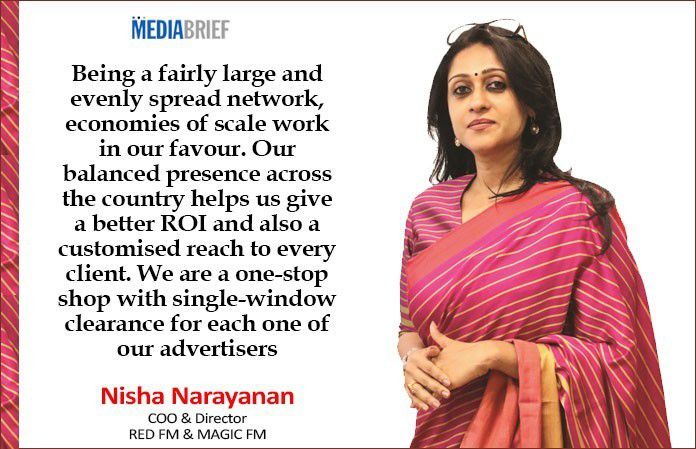 Radio has been suffering for decades now, due to several issues at the industry level, and one of the most important roadblocks to its growth has been content-restrictive regulation, including on broadcasting news. How does that make you feel?
Radio has been suffering for decades now, due to several issues at the industry level, and one of the most important roadblocks to its growth has been content-restrictive regulation, including on broadcasting news. How does that make you feel?
For the government to acknowledge that FM programming is incomplete without news is, I suppose, a step forward. But for them to insist that we carry only syndicated AIR news, and that too only “national” bulletins in Hindi and English, is a couple of steps backwards.
See, FM stations pride themselves on their unique content and style of delivery, and this differentiation is particularly seen in the non-music elements of programming. To relay the same AIR news bulletins on all private FM channels at the same time, at maximum 30 minutes deferred, especially in the regional markets where they speak neither Hindi nor English, would completely defeat the purpose.
It would damage our content fabric.
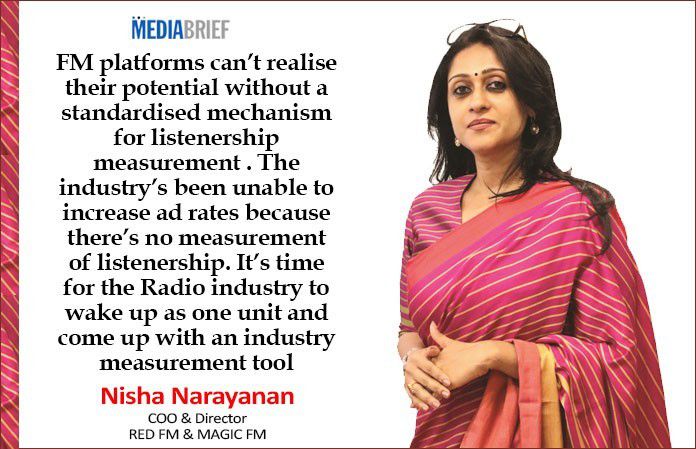 In spite of being such personal, powerful and local medium, plus a conversational one at that, FM Radio in India hasn’t grown business-wise to its promise and potential. Why is that?
In spite of being such personal, powerful and local medium, plus a conversational one at that, FM Radio in India hasn’t grown business-wise to its promise and potential. Why is that?
In the last four-five years, radio has been growing at 12 to 13 percent as an industry, but the overall ad pie has continued to be the same.
Revenue from the radio segment constitutes about 4-5% of the overall media & entertainment sector.
And even though now, with Phase II and Phase III auctions coming in, and despite multiple radio stations having been launched, the ad pie has not grown. So purely from an advertising model, radio cannot survive.
Also, some of the key categories that advertise very well with us -- like the FMCG and auto sectors -- are themselves not doing well.
Mergers in sectors like BFSI (banking, financial services and insurance) and telecom have also affected some part of the business. Both the volume and value is a big struggle unless we expand the business in terms of other forms of revenues.
Red FM has decided to encash the brand through other verticals like events and activation. Approximately, 20% is what we are looking at from non-traditional revenue, where 80% of the business is coming from the FCT (free commercial time) business.
This year with a spillover elections, IPL and the ICC World cup, upcoming state elections and some aggressive government business, we hope to see a better growth end of the year for Radio.
But, there are a lot of policy and regulatory aspects which restrict growth.
Indeed there are, and have been for a long time now. But before we get to those, would you like to share your views on the lack of a good measurement metric for FM Radio?
The measurement system is critical. It should not just relegate itself to four to five cities but also at least map all state capitals. FM platforms can’t realise their full potential unless the industry has a standardised listenership measurement mechanism. Since there is no research, there is no clear idea who is the top player. IRS is not the tool to measure radio; after all, it is a readership survey. Also, the industry has been unable to increase ad rates because there’s no measurement of listenership.
I think it is time for the radio industry to wake up as one unit and come up with an industry measurement tool. If we are able to do something like that then we will be able to grow the business much higher than what it is today. We will be able to increase the rates because one can show the client and agencies the kind of response we are getting and the kind of target audience we have.
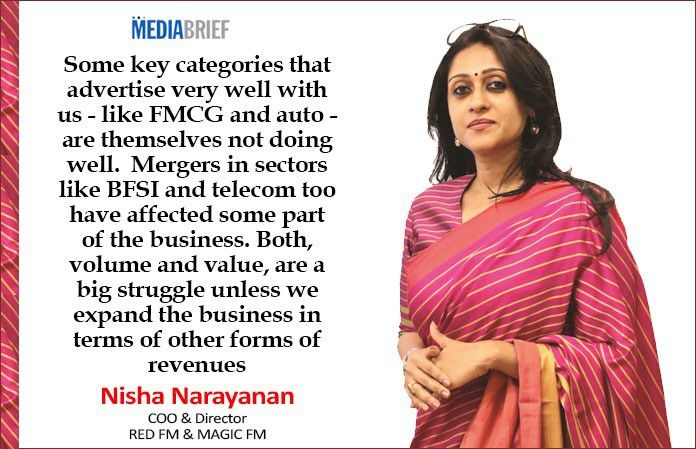 What are the areas where Radio could do with support from the government?
What are the areas where Radio could do with support from the government?
First and foremost, the radio licensing policy is skewed. Also, many smartphones do not have in-built FM apps. That is a huge concern and it should be addressed by the government. In fact we have put our case forward.
Auctions for radio frequencies for the third batch of Phase III, which have been delayed for the longest time, could flop unless the government tweaks the terms and conditions.
Auctions for the second batch were held in October 2016 and drew a lukewarm response. While the license fee for the newer stations might be smaller, the operating costs would be fairly high, making the operations unviable.
Current reserve prices for some cities had kept a lot of players away from the auctions in many B, C & D type of cities.
On another thing -- during the year, we hope that there will be progress on digitisation for FM and private FM operators will get subsidy for import of latest technology to move from analog to digital. And once that's done, we will be able to see newer formats and variety in content.
 Tell us about another major bug-bear – the one to do with music licenses, royalty, and other expenses…
Tell us about another major bug-bear – the one to do with music licenses, royalty, and other expenses…
It is definitely challenging to run the radio business, where there are a lot of hurdles like licenses, royalty and so on. And the moment we are dependent on the traditional business model alone, the going gets tough. I have always been a firm believer that we need to push through on-air innovations and non-traditional revenue. It is therefore that we’ve gone into flagship events, landmark concerts and digital initiatives. One definitely cannot continue to make much by only running a radio station and selling standard inventory.
Secondly, by virtue of being a fairly large and an evenly spread network, economies of scale work in our favour. Our balanced presence across the country helps us give a better return on investment (ROI) to the client, along with a customised reach to every client. We are a one-stop shop with single-window clearance for each one of our advertisers.
When we speak of television, there is still a massive 100 million households opportunity for it to reach across India. What is the role and importance of, and opportunity for, Radio in the rural markets, even as digital is coming in slowly in the back of beyond in India? Most large brands seem to believe more in the traditional melas and haats to reach out to rural TGs…
Oh, Radio is still very significant in rural areas! It has a far wider reach in the hinterland of the country solely because its a hyperlocal medium and caters to audiences in their dialects.
Radio also has the ability to give a sense of belonging to its listeners as they can interact with RJs through call in facilities.
And more than just connects for rural TGs, Radio has been playing a much bigger role: It has been able to unite the linguistic and ethnic diversity of India. It connects people from all backgrounds, improving the rural-urban divide, preserving culture and traditions with its numerous arrays of frequency.
And yes, Radio is providing entertainment where digital modes haven't reached yet, and has been helping to promote rural development programs.
And your digital radio initiatives should help too…
Yes. The digital space is growing at a skyrocketing speed and everyone is jumping onto it; even the radio industry. Today every radio brand has a YouTube channel and content specifically made for digital. RED FM too has ventured this space and is looking at building this into a marketing tool.
Music is not the only thing that defines radio. Snackable content such as popular shows of our RJs are getting a good response. We also have several engaging properties such as ‘Bauaa’ among others.
RED FM digital radio is a hardcore non-music app that is highly interactive and heavy on content.
It will feature the making of the radio shows, behind the scenes, campaigns and content like ‘Bauaa’ and ‘Nand Kishore Bairagi’, among others. It will also feature some of the programmes that are also available on terrestrial radio. Basically, snackable content that is focused on humour and is highly interactive. The other things that will stand out for us will be that it is non-music and will have regional content across different languages.
Read the full article
